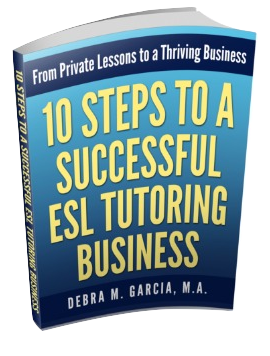Teaching Voiced and Unvoiced
Sounds to ESL Students
The concept of voiced and unvoiced sounds is extremely useful for teaching pronunciation to English language learners. This concept comes from the field of phonetics.
It's particularly useful for –ed endings, words ending with an "s," and words spelled with "th."
Teaching students this concept will also be helpful for b/p, f/v, k/g, s/z, and other pronunciation pairs. The correct pronunciation of these letters can be achieved by determining whether the sound is voiced or unvoiced (also referred to as voiced and voiceless sounds).
Teaching Voiced Sounds to ESL Students
Essentially, a "voiced" sound, or "voicing," means that we feel a vibration when we make the sound. The vibration comes from our vocal chords.
The way I teach voicing to ESL students is by asking them to put two or three fingers gently against their throat and then make a sound. If they feel a vibration, the sound is voiced.
Teaching Unvoiced (or Voiceless) Sounds to ESL Students
Unvoiced sounds are also called "voiceless" sounds. You can probably guess that an unvoiced sound is the exact opposite of a voiced sound.
When you put your fingers against your throat and make a sound, if you do not feel a vibration, then the sound (or letter) is unvoiced (or voiceless).
"Showing" Voiced or Unvoiced Sounds
When I work with adult ESL students, sometimes they are self-conscious about doing the physical exercise of putting their fingers against their throats and making a strange sound. I model the physical behavior and then I encourage them follow me and to continue to put their fingers to their throats to hear and feel the sounds.
Sometimes, students cannot feel the vibration of a voiced sound (or they will feel it when they are making a voiceless sound, or they are unsure of whether they feel a vibration or not), so I have to make sure that they are making the sound correctly (correct lip and tongue position, etc.).
Oftentimes, the trick is to isolate the one specific sound. For example, if a student is trying to make the "p" sound, which is voiceless, he or she may say that it is voiced because he or she feels a vibration in his or her throat. The problem here is that the student is most likely making a "pa" sound and not just a "p" sound. All vowels, vibrate, so if the consonant is not isolated in this case, the student is also making a vowel sound and will feel a vibration.
In addition to modeling the correct sound and how to isolate it, I also use Pronunciation Pairs: An Introductory Course for Students of English by Ann Baker and Sharon Goldstein to show the correct tongue and lip placement. The drawings are clear and so are the descriptions and exercises.
During our lesson, after the ESL student is able to correctly feel the vibration, or not, the next challenge is to encourage the student to continue to put his or her fingers to his or her throat while we determine whether the list of words we're working on has voiceless or voiced sounds.
This pronunciation technique is particularly useful for English past tense pronunciation. When I teach lessons to ESL students on how to pronounce regular Simple Past tense verbs (those ending with "-ed"), I first teach the concept of voiced and unvoiced sounds, then move into Simple Past tense pronunciation practice.
In later lessons on pronunciation, I often come back to the
concept of voiced and unvoiced sounds, so I find that it's helpful to
teach this concept early in our classes together. It serves as a
foundation for many future lessons.
From Voiced and Unvoiced Sounds
to Teaching ESL to Adults Home


New! Comments
Have your say about what you just read! Leave me a comment in the box below.